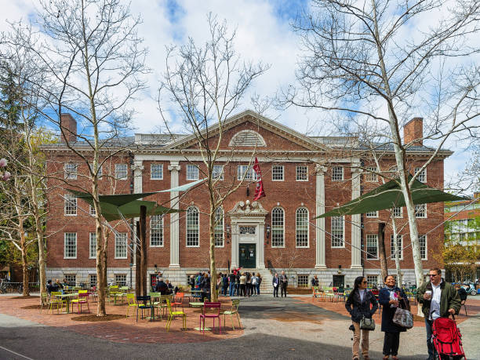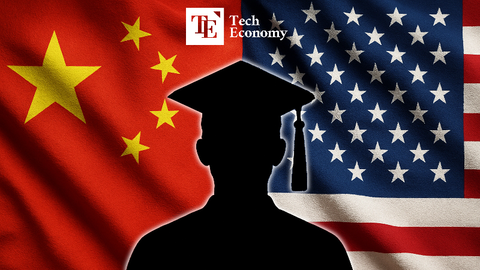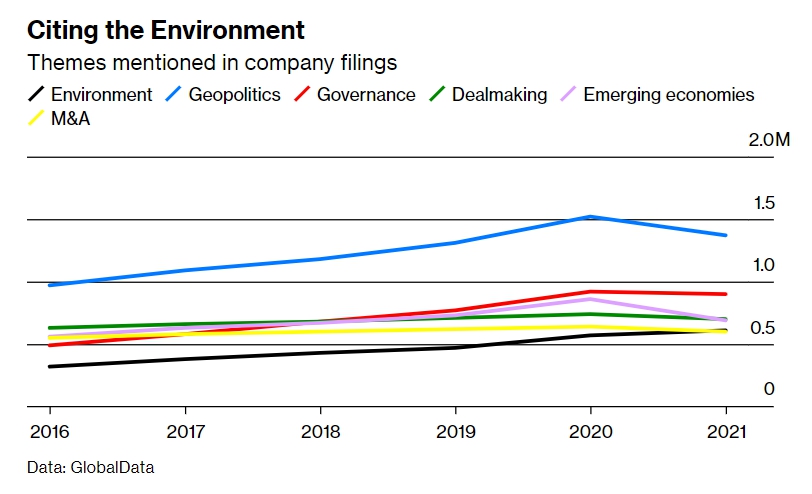There's an increase in Asian firearm with Covid-19 Effect.
There's an increase in Asian firearm with Covid-19 Effect.
Input
Modified
After Covid-19 emerged in China, people began to express their anger toward all Asian Americans living in the United States, displaying discrimination in both physical and verbal abuse – including the case where six Asian women were victims in Atlanta shootings. After Covid-19 emerged in China, people began to express their anger toward all Asian Americans living in the United States, displaying discrimination in both physical and verbal abuse – including the case where six Asian women were victims in Atlanta shootings.
According to NBC News, anti-Asian hate crime increased by 339 percent in 2021 compared to 2020 – approximately 10,380 reports of hate incidents from March 2020 to September 2021 – primarily in city areas such as New York, San Francisco, and Los Angeles, according to the Center for the Study of Hate and Extremism, which included both verbal harassment and shunning.
With so many cases of Asian hate crimes on the rise, Michigan News reported that Asian Americans have armed themselves with Covid-19 effect in response to racism. According to research, increased hate crimes and racist acts against Asian Americans had a strong correlation with increased firearm purchases.
“Our data suggests that racism and its link to increased firearm ownership and carrying may put Asian Americans at elevated risk of firearm injury.” Hsing-Fang Hsieh, an assistant research scientist in health behavior and health education at the University of Michigan School of Public Health, stated.
This was becoming an increasingly difficult issue to solve in terms of protecting people who had experienced racial discrimination as well as neighbors or people around people who engaged in unsafe firearms behavior.
Another study, led by Tsu-Yin Wu, director of Eastern Michigan University's Center for Health Disparities Innovation and Studies, and published in the Detroit News, found a strong link between the increase in firearm among Asian Americans and racist incidents.
According to Wu's study, 6 percent of respondents said they decided to buy a gun to feel protected – from racism when the pandemic began; 55 percent of those who bought a gun said it was their first time owning a gun. "It's about how to keep it safe so that other people can't get ahold of it when it's loaded," Wu explained.
Still, no solutions have been found to reduce the Asian hate from Covid-19, however, John C. Yang, the president and executive director of the nonprofit civil rights group Asian Americans Advancing Justice mentioned that “We must bring attention to the hate that impacts all communities,” he continues, “Especially during a time when groups are trying to divide and pit vulnerable communities against each other, we must remember that we are stronger together.”
According to NYC Human Rights, some campaigns are held to combat anti-Asian discrimination, harassment, and bias, such as posting texts-fighting fear with facts. Graphics depict additional resources for victims of hate crimes, such as how to contact community-based organizations for assistance.
According to PBS NewsHour, some factors for how to respond to hate include reporting the hate crime or incidents by calling 911 immediately, checking in with Asian American peers, knowing the history of Asian American discrimination, and advocating for awareness. However, only 0.03 percent of anti-Asian attacks were reported in 2021, according to Endless Tide: The Continuing Struggle to Overcome Anti-Asian Hatred in New York.
Improvements should be made by developing better guidelines and standards for classifying incidents as possible hate crimes - Hate crimes are underreported because people often do not know whether to report them. Of course, all hate crime laws should be revised.
According to the Asian American Bar Association of New York, improving access and transparency in the reporting of hate crimes data - by disclosing the data of hate crimes, investigations, and prosecutions - could lead to a change in community trust in law enforcement.
The Police Chief also stated that consistent reporting could lead to prevention - both victims and witnesses must report accurately and proactively, outreach to Targeted Groups, reporting hotlines and webpages, etc., even if they are unsure if it is related to hate crime.
According to the NCVS study, victims of hate crimes experience more psychological distress than victims of other types of crimes, including depression, stress, and anxiety.
Everyone's safety and rights should be protected, regardless of gender, race, or color, and it's time to act by prioritizing efforts to prevent hate crimes. Asian Americans have been targeted; who will be next?























 Jeff Sessions — then-attorney general under the Trump administration —
Jeff Sessions — then-attorney general under the Trump administration —  The number of international students in Japan sharply decreased since the pandemic started. While many countries have already reopened their borders months ago after seeing stabilizing infection numbers, Japan has just now
The number of international students in Japan sharply decreased since the pandemic started. While many countries have already reopened their borders months ago after seeing stabilizing infection numbers, Japan has just now  Princeton University's Regular Decision shows a low acceptance rate of only 1032 students accepted out of 27,836 applications, which is only 3.71 percent of the acceptance rate in 2024. Photo:
Princeton University's Regular Decision shows a low acceptance rate of only 1032 students accepted out of 27,836 applications, which is only 3.71 percent of the acceptance rate in 2024. Photo:  Surprisingly, the Early Round acceptance rate for the class of 2024 was 12.11 percent higher than the Regular Decision acceptance rate. Photo:
Surprisingly, the Early Round acceptance rate for the class of 2024 was 12.11 percent higher than the Regular Decision acceptance rate. Photo: 
 Sex education is required for students beginning at a young age, before they are exposed to similar topics on social media and learn incorrect or incorrect information. Photo:
Sex education is required for students beginning at a young age, before they are exposed to similar topics on social media and learn incorrect or incorrect information. Photo:  At the 26th United Nations Climate Change Conference in 2021 (COP26), 197 member countries agreed on the Glasgow Climate Pact. To list only a few, over 140 countries pledged to reach net-zero emissions by the middle of this century, more than 100 countries pledged to reverse deforestation by 2030, and more than 40 countries pledged to move away from coal. Business Schools for Climate Leadership (BS4CL) was also launched in the same year to prepare their students for combating climate change in the business field. Photo:
At the 26th United Nations Climate Change Conference in 2021 (COP26), 197 member countries agreed on the Glasgow Climate Pact. To list only a few, over 140 countries pledged to reach net-zero emissions by the middle of this century, more than 100 countries pledged to reverse deforestation by 2030, and more than 40 countries pledged to move away from coal. Business Schools for Climate Leadership (BS4CL) was also launched in the same year to prepare their students for combating climate change in the business field. Photo:  Businesses have also started to care for sustainability and climate change in their practices. Over the last five years, the usage of the word "environment" has doubled in their earnings reports. In 2021 alone, the term appeared more than 600,000 times. Source:
Businesses have also started to care for sustainability and climate change in their practices. Over the last five years, the usage of the word "environment" has doubled in their earnings reports. In 2021 alone, the term appeared more than 600,000 times. Source: 


 Surprisingly, K-12 educators had the highest percentage of burnout, with college and university workers coming in second at 35%. Photo:
Surprisingly, K-12 educators had the highest percentage of burnout, with college and university workers coming in second at 35%. Photo:  More than half of teachers said they will leave education because of the Covid-19, nearly twice as many as in July 2020. Photo:
More than half of teachers said they will leave education because of the Covid-19, nearly twice as many as in July 2020. Photo: 
 In February of this year, Utica College
In February of this year, Utica College  Developed by the University of Portsmouth and Crowe, a risk management firm, the Financial Cost of Fraud 2019 report showed how much damage and costs fraud inflicts on the global economy. For there has been a surge in frauds and scams during the pandemic, the overall damage and costs of such financial crimes would be substantially greater now. Source:
Developed by the University of Portsmouth and Crowe, a risk management firm, the Financial Cost of Fraud 2019 report showed how much damage and costs fraud inflicts on the global economy. For there has been a surge in frauds and scams during the pandemic, the overall damage and costs of such financial crimes would be substantially greater now. Source:  2020-21 has by far the most shooting cases with injuries only and deaths, with a total of 93 cases. Source: U.S. Department of Defense, Naval Postgraduate School, Center for Homeland Defense and Security, K–12 School Shooting Database, retrieved September 16, 2021, from
2020-21 has by far the most shooting cases with injuries only and deaths, with a total of 93 cases. Source: U.S. Department of Defense, Naval Postgraduate School, Center for Homeland Defense and Security, K–12 School Shooting Database, retrieved September 16, 2021, from  From 2020 to 2021, there are 145 shootings in public, private, elementary, and secondary schools. Source: U.S. Department of Defense, Naval Postgraduate School, Center for Homeland Defense and Security, K–12 School Shooting Database, retrieved September 16, 2021, from
From 2020 to 2021, there are 145 shootings in public, private, elementary, and secondary schools. Source: U.S. Department of Defense, Naval Postgraduate School, Center for Homeland Defense and Security, K–12 School Shooting Database, retrieved September 16, 2021, from  HSBC Canada reports that the financial crime risk (FCR) has increased for both individuals and businesses during the pandemic. Source:
HSBC Canada reports that the financial crime risk (FCR) has increased for both individuals and businesses during the pandemic. Source:  Microsoft reported that the state-backed hackers from North Korea (supposedly named Zinc and Cerium) and Russia (supposedly named Fancy Bear) attempted to break into at least nine health organizations, including Pfizer, in November 2020. Photo:
Microsoft reported that the state-backed hackers from North Korea (supposedly named Zinc and Cerium) and Russia (supposedly named Fancy Bear) attempted to break into at least nine health organizations, including Pfizer, in November 2020. Photo:  Photo:
Photo:  Students were spending 20% more time on social media than they were prior to the Covid-19 pandemic — which resulted bullying through Cyberbullying — bullying that happens through digital devices such as phones or computers. It often happens over social media, text, email, instant messages, and gaming. Photo:
Students were spending 20% more time on social media than they were prior to the Covid-19 pandemic — which resulted bullying through Cyberbullying — bullying that happens through digital devices such as phones or computers. It often happens over social media, text, email, instant messages, and gaming. Photo: